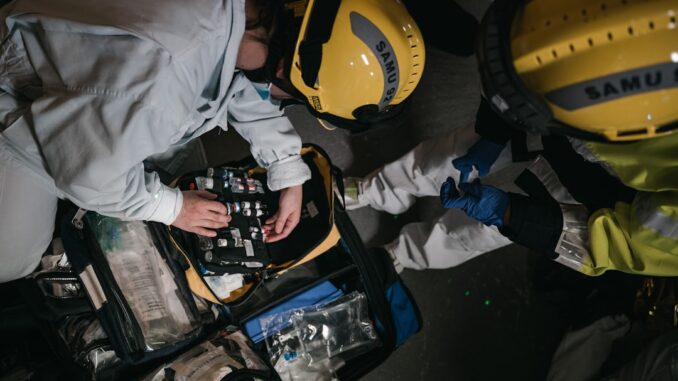
Summary
A recent federal study reveals alarming gaps in care for Medicare beneficiaries after nonfatal overdoses, despite the effectiveness of interventions like MOUD and naloxone. The study highlights the urgent need for improved and timely access to these lifesaving treatments. The findings underscore the need for a comprehensive approach to post-overdose care, integrating medication, behavioral health services, and harm reduction strategies.
** Main Story**
Okay, so a new federal study just dropped, and it’s highlighting some serious issues when it comes to how we’re handling care after someone on Medicare survives a drug overdose. We’re talking about a collaborative effort, big names like SAMHSA, NIH’s NIDA, CMS, and the CDC all pitching in. The study was published in JAMA Internal Medicine, which is pretty legit. Honestly, while there’s some good news, there are definitely some red flags too. They looked at a huge group – around 137,000 Medicare beneficiaries who overdosed in 2020. So, what did they find?
What’s Working?
Here’s the upside: The study really hammered home how well certain treatments work to prevent future overdoses. Specifically, Medications for Opioid Use Disorder, or MOUD, like methadone and buprenorphine, are game-changers. Methadone slashed the risk of a fatal overdose by a whopping 58%, and buprenorphine wasn’t far behind at 52%. That’s huge! Plus, behavioral health assessments and crisis services made a massive difference, cutting the risk by 75%.
And don’t forget naloxone, the overdose reversal drug. It reduced the risk of overdose deaths by 30%. These findings just prove that these interventions are, without a doubt, the gold standard for overdose prevention and recovery. It makes you think: why aren’t more people getting them?
The Problem Areas
That said, it’s not all sunshine and rainbows, unfortunately. The study also exposed some pretty significant gaps in care. Shockingly, only 4.1% of the group received MOUD, and a measly 6.2% actually filled a prescription for naloxone. Seriously? These are life-saving medications. It’s a real head-scratcher. And even for those who did get MOUD, there was a massive delay – an average of 72 days after the overdose. Imagine waiting over two months to get the help you desperately need. That’s a critical window of opportunity lost. I remember one time, helping a friend get into rehab, the wait was agonizing. Every day felt like an eternity.
Most people (89%) did get some kind of behavioral health support, but the median duration was only 15 days. That’s barely enough time to scratch the surface, isn’t it? It’s clear that people need more sustained support, a longer-term commitment to their well-being.
What Can We Do About It?
So, the study is pointing directly at a few key areas where we need to step up our game in post-overdose care.
First, we gotta get MOUD and naloxone into more hands, simple as that. Policy changes, like getting rid of those federal requirements for specialized waivers to prescribe buprenorphine, are a great start. But we need to do more to make sure people can actually get these meds quickly. Streamlining referral processes, beefing up provider capacity, and just educating patients about the benefits of MOUD are all crucial.
Secondly, we absolutely have to cut down on the time it takes to get people into treatment after an overdose. Every day counts.
Finally, we need to make behavioral health services more comprehensive and longer-lasting. Things like counseling, therapy, and peer support groups can make a real difference in helping people stay on the path to recovery and avoid future overdoses.
Time for Action
Look, the opioid crisis is still a massive public health crisis, we know that. This study, though, it gives us some real insights into what’s working and where we’re falling short. It’s a call to action, plain and simple. We need a multi-pronged strategy to tackle this thing head-on. That means expanding access to evidence-based treatments, knocking down barriers to care, and weaving harm reduction strategies into everything we do.
Only through a united effort – individuals, communities, policymakers – can we even begin to tackle this epidemic and save lives. It’s a complex issue, no easy answers. But, hey, it’s March 21, 2025, and this is the best info we have right now. That being said, keep in mind research keeps coming and policies can shift.


Be the first to comment